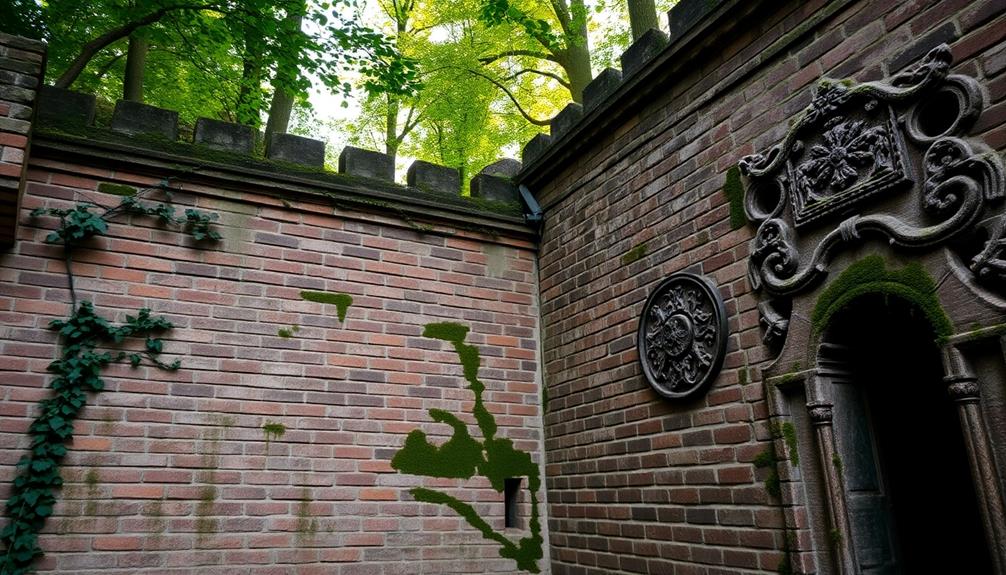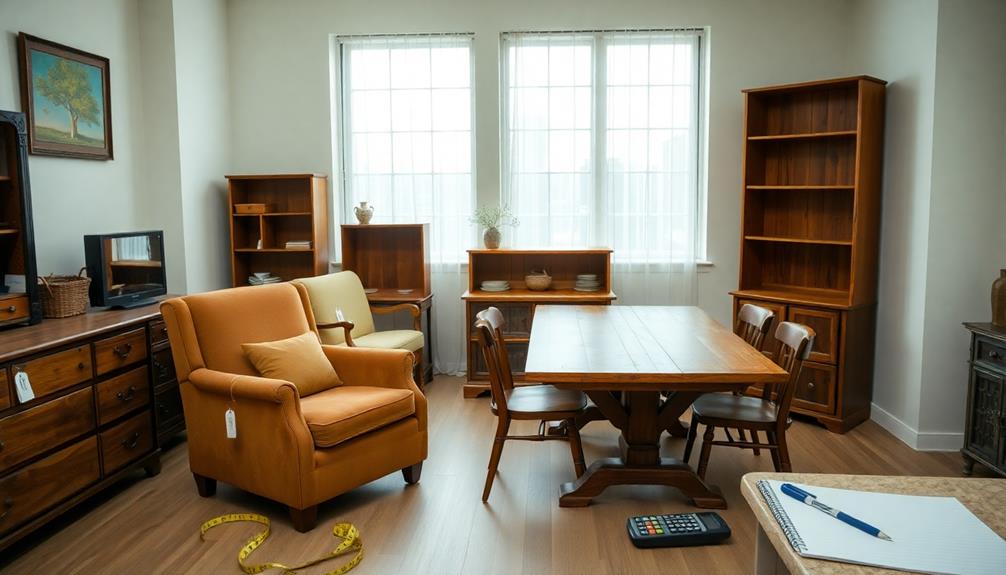Thick German walls are more than just sturdy structures; they're historical monuments that reflect resilience and craftsmanship. You'll notice their origins rooted in medieval defense against invaders, showcasing the skill of builders. These walls also serve today's needs, offering insulation and durability while harmonizing with modern aesthetics. They enhance energy efficiency and provide peace from outside noise, creating comfortable living spaces. Additionally, these impressive constructions attract tourists, linking the past to the present. As you explore, you'll uncover even more about their cultural significance and enduring legacy in architectural design.
Key Takeaways
- Thick German walls originated as medieval defense mechanisms, showcasing the craftsmanship and power of their builders.
- Their architectural resilience allows them to withstand environmental challenges while adapting to modern needs.
- Constructed with high-quality materials and precision techniques, these walls ensure durability and stability.
- Thick walls provide superior thermal and sound insulation, enhancing comfort and energy efficiency in buildings.
- Their cultural significance in tourism highlights connections to Germany's history, attracting visitors and supporting local economies.
Historical Origins of Thick Walls
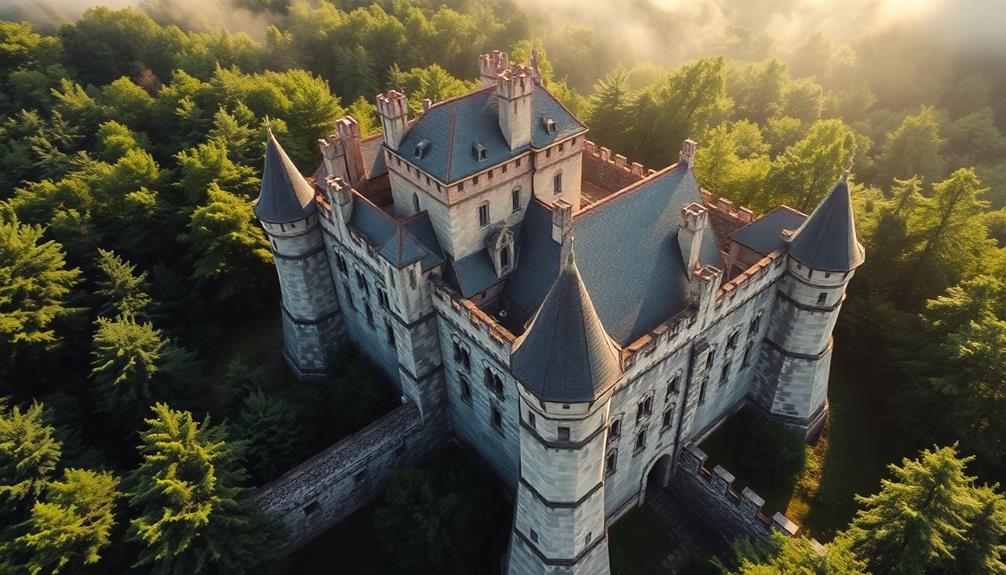
Throughout history, thick walls have stood as a tribute to human ingenuity in defense and architecture. You can trace their origins back to medieval times, where they served as formidable barriers against invaders. Builders relied on advanced siege tactics to protect their communities, showcasing strength and resilience.
These structures symbolize power, emphasizing the skill and craftsmanship of their creators. As you explore these architectural wonders today, you'll notice their cultural significance in urban planning and tourism.
Thick walls not only preserve historical narratives but also embody local identity, making them essential to heritage. They stand as lasting reminders of a time when safety and durability were paramount, illustrating how architecture reflects society's needs and values throughout the ages.
Architectural Resilience and Power
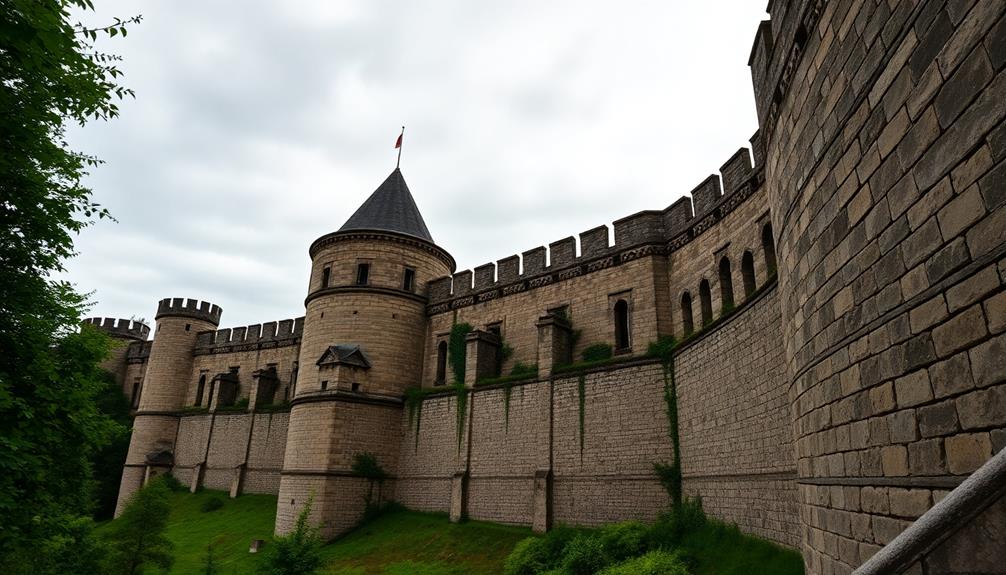
Embodying strength and stability, thick walls exemplify architectural resilience and power, standing firm against the test of time.
You'll notice how these robust structures have withstood centuries of environmental challenges, showcasing the skill of their builders. Each wall tells a story of endurance, defending against harsh weather and intruders alike.
As you explore these buildings, you'll appreciate their ability to maintain their integrity while adapting to modern needs. The thickness not only signifies security but also provides natural insulation, enhancing energy efficiency.
In an era where durability is paramount, thick walls remind you of the importance of thoughtful design, merging historical significance with contemporary functionality—an enduring symbol of strength in architecture.
Construction Techniques for Longevity
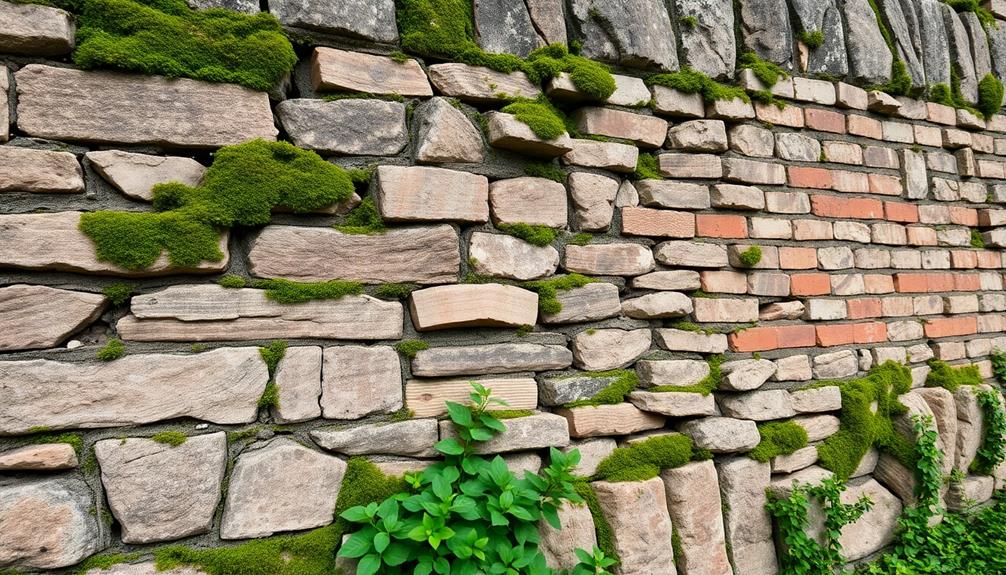
When it comes to constructing thick walls for longevity, several key techniques play an essential role in ensuring their durability. Builders often rely on high-quality materials, such as reinforced concrete or specially treated bricks, to withstand environmental stresses over time. Additionally, advancements in adhesives and mortars emphasize the science of sticky surfaces, ensuring that layers bond seamlessly and resist separation under pressure. Proper layering and strategic reinforcement further contribute to walls that can endure decades of wear and tear.
You'll want to use high-quality materials, like stone and mortar, which provide a solid foundation. Precision in measurements is vital; small errors can compromise stability.
Consider the strategic placement of stones in layers, which adds strength and enhances thermal insulation. Integrating iron bars into the walls boosts robustness against external pressures.
Don't overlook historical craftsmanship techniques, as they emphasize quality and have stood the test of time.
Benefits of Thick Walls
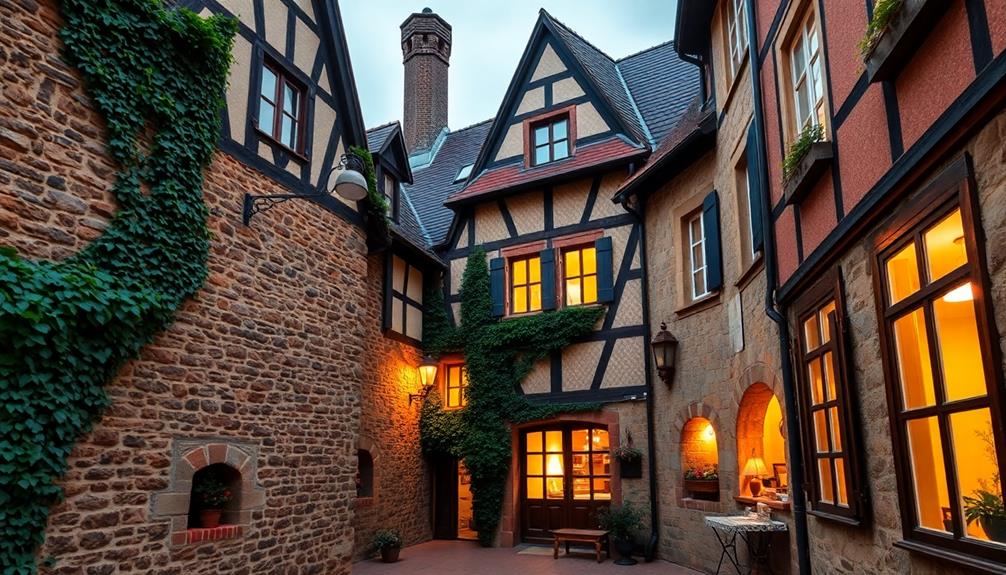
Offering unmatched stability, thick walls provide numerous benefits that enhance both the structural integrity of buildings and the comfort of their inhabitants.
You'll find that these walls effectively regulate indoor temperatures, acting as natural insulators that keep your space cozy in winter and cool in summer. The robust construction also offers superior sound insulation, shielding you from external noise and creating a peaceful environment.
Furthermore, thick walls enhance security by serving as formidable barriers against intrusions. Their durability means you'll spend less time and money on repairs, ensuring your home remains safe and comfortable for years.
Modern Design Adaptations
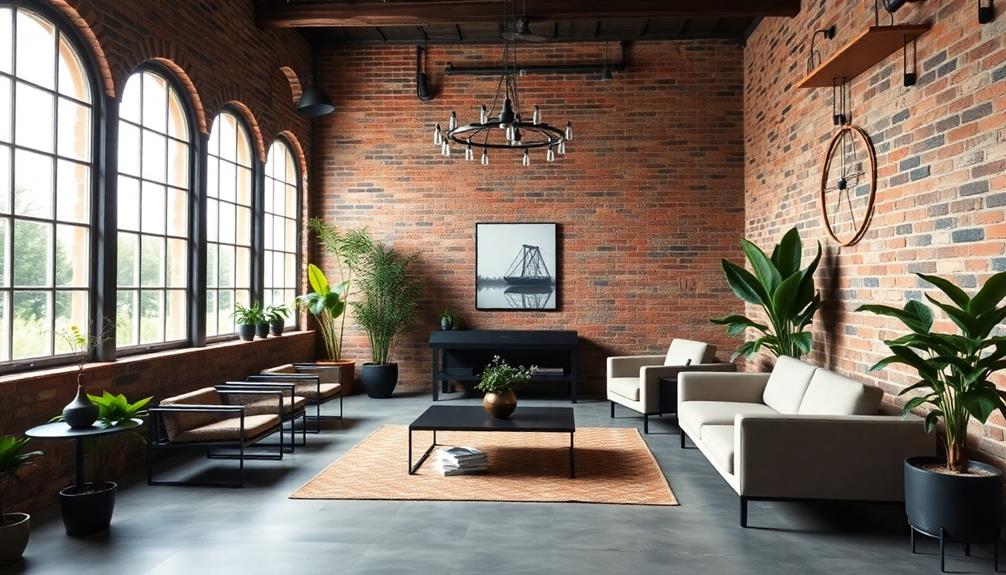
Modern design adaptations of thick walls seamlessly blend historical craftsmanship with contemporary aesthetics, creating spaces that honor tradition while meeting today's needs.
You can appreciate how architects integrate these sturdy structures into modern homes and commercial buildings, enhancing both functionality and beauty.
By using large windows and open layouts, they invite natural light, making interiors feel spacious without sacrificing the strength thick walls offer.
You'll find that contemporary materials and techniques, such as reinforced concrete, further enhance insulation and durability.
This approach not only preserves the rich heritage of thick walls but also guarantees they're relevant for modern living.
As you explore these designs, you'll see how they embody a perfect marriage of past and present, creating unique, inviting environments.
Role in Sustainable Architecture
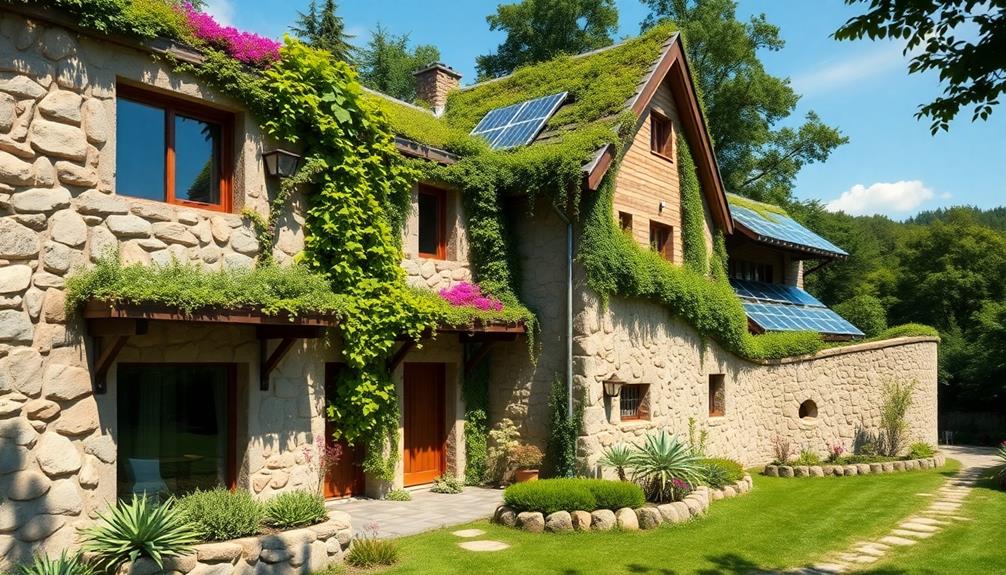
Thick walls play a pivotal role in sustainable architecture by enhancing energy efficiency and reducing environmental impact. Their impressive thermal mass helps you maintain comfortable indoor temperatures, minimizing reliance on heating and cooling systems.
This natural insulation means you'll enjoy lower energy bills and a reduced carbon footprint. Additionally, the durability of thick walls translates into fewer repairs over time, aligning with eco-friendly construction practices.
You'll also benefit from excellent sound insulation, creating a peaceful indoor environment. By integrating these historical features into modern designs, you embrace sustainability while preserving architectural heritage.
Choosing thick walls is an investment in resilience and efficiency, making them a smart choice for any sustainable building project.
Cultural Significance in Tourism

Historical landmarks with thick walls draw countless tourists enthusiastic to explore their rich stories and architectural grandeur. These structures serve as tangible connections to Germany's past, offering visitors unique insights into the nation's cultural heritage. By walking through these venerable edifices, you experience history firsthand, enriching your travel experience.
| Aspect | Significance | Impact on Tourism |
|---|---|---|
| Architectural Style | Reflects medieval design | Attracts architecture lovers |
| Historical Context | Embodies local narratives | Engages history enthusiasts |
| Cultural Identity | Represents regional pride | Boosts local economies |
Visiting these sites not only deepens your appreciation for craftsmanship but also supports preservation efforts, ensuring future generations can enjoy their allure.
Frequently Asked Questions
What Materials Were Historically Used in Constructing Thick German Walls?
Historically, you'd find thick German walls constructed using durable materials like stone, mortar, and iron reinforcement. These elements guaranteed stability and strength, showcasing architectural resilience while providing effective insulation and lasting protection against external elements.
How Do Thick Walls Affect Indoor Air Quality?
Thick walls act like a cozy blanket, trapping warmth and minimizing drafts. They enhance indoor air quality by regulating humidity and temperature, creating a comfortable environment while reducing allergens and pollutants, ensuring you breathe easier.
Are Thick Walls More Resistant to Earthquakes?
Thick walls can be more resistant to earthquakes due to their mass and structural integrity. They distribute seismic forces better, helping your home withstand shaking, but proper reinforcement and design are still essential for ultimate safety.
What Are the Maintenance Requirements for Thick Walls?
Oh sure, thick walls maintain themselves! Just wipe off the dust, ignore cracks, and pretend they're invincible. Seriously, you'll need regular inspections, repairs, and moisture control to keep them standing strong and looking good.
How Do Thick Walls Influence Property Values Today?
Thick walls enhance property values by attracting buyers seeking durability and energy efficiency. They offer superior insulation and security, making homes more desirable. Their historical charm can also increase market appeal, driving up real estate prices.
Conclusion
As you stand before the towering thick German walls, you can't help but feel the whispers of history echoing through their stones. These monumental structures not only showcase the ingenuity of past architects but also remind us of the resilience embedded in their design. By embracing both tradition and modernity, they pave the way for a sustainable future. So, let the mystique of these walls inspire your journey through architecture, where every brick tells a story waiting to be discovered.
